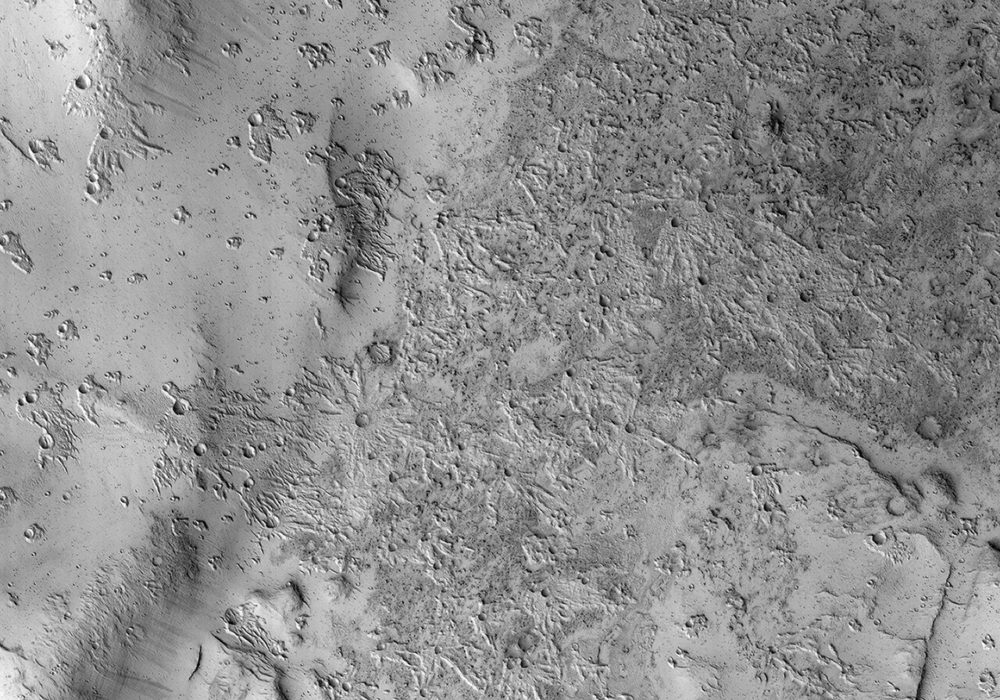This region of Mars has been sprayed with secondary craters from 10-kilometer Zunil Crater to the northwest.
Secondary craters form from rocks ejected at high speed from the primary crater, which then impact the ground at sufficiently high speed to make huge numbers of much smaller craters over a large region. In this scene, however , the secondary crater ejecta has an unusual raised-relief appearance like bas-relief sculpture. How did that happen?
One idea is that the region was covered with a layer of fine-grained materials like dust or pyroclastics about 1 to 2 meters thick when the Zunil impact occurred (about a million years ago), and the ejecta served to harden or otherwise protect the fine-grained layer from later erosion by the wind.
Written by: Alfred McEwen (17 April 2017)
This is a stereo pair with ESP_049564_1845 .
More info and image formats at http://hirise.lpl.arizona.edu/ESP_049076_1845
Image: NASA/JPL/University of Arizona
